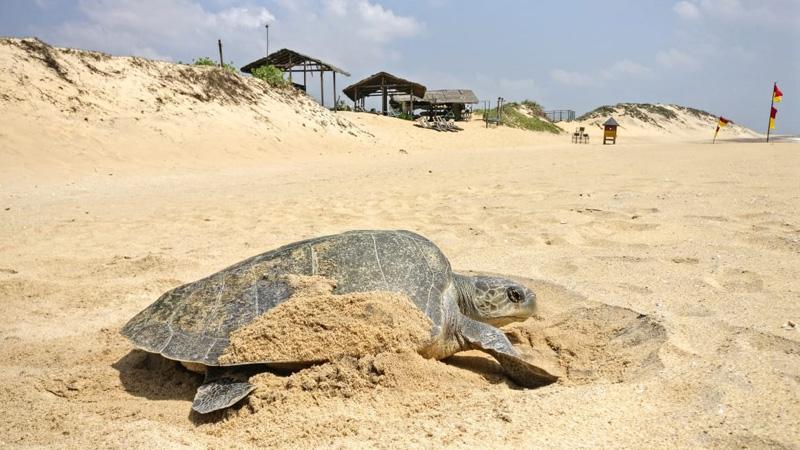
Jetwing Yala recorded its first batch of turtle nests for the season early last week, hotel sources said.
In keeping with the long-standing conservation efforts at the hotel, two nests at JetwingYala’s beachfront were protected in-situ to prevent disturbance by feral animals. A third nest, partially disturbed, was discovered further along the beach and was relocated to a fenced turtle nest conservation area maintained at the hotel in collaboration with the Department of Wildlife, the release added.
Last year, over 11 such nests were conserved at JetwingYala, providing over a thousand hatchlings with much-needed protection during their vulnerable first hours of life. The safety afforded at Jetwing ensures that the cycle of nesting continues along the beaches of Yala, as turtles are known to return to their beach of hatching year after year.
The efforts of the hotel were recognised by the Department of Wildlife which, in 2019, decided to construct a turtle egg conservatory adjoining the hotel premises where eggs can be protected from unscrupulous poachers and feral animals.
Turtles are ancient reptiles, their ancestors appearing in the fossil record 250 million years ago and outlasting the age of the dinosaurs. The beaches of Sri Lanka are home to five of the seven extant species of sea turtles, including the largest living turtle on Earth – the leatherback sea turtle (Dermochelys coriacea). All seven species are considered threatened globally, their populations plummeting as a result of poaching for both eggs and meat, disturbance of nesting beaches, being caught as bycatch in commercial fisheries, and changes to global climatic conditions which affect their nesting habits.
You can share this post!
Content

Former State Minister Lohan Ratwatte passed away today while receiving treatment at a private hospital in Colombo, his family said. He was 57. Recently, he was admitted to hospital following an illness.

Among the top news stories reported today were the passing away of former State Minister Lohan Ratwatte, questioning of NPP Leader Wimal Weerawansa by the CID over the remarks he made about the Easter Sunday attack investigations and a protest march held in Borella calling an end to Israel’s continued bombardment of Gaza.

Two persons reportedly involved in the murder of a resident in Peradeniya following a dispute over a chocolate worth 10 cents has been remanded by the Magistrate when Peradeniya Police produced them in court.







Leave Comments